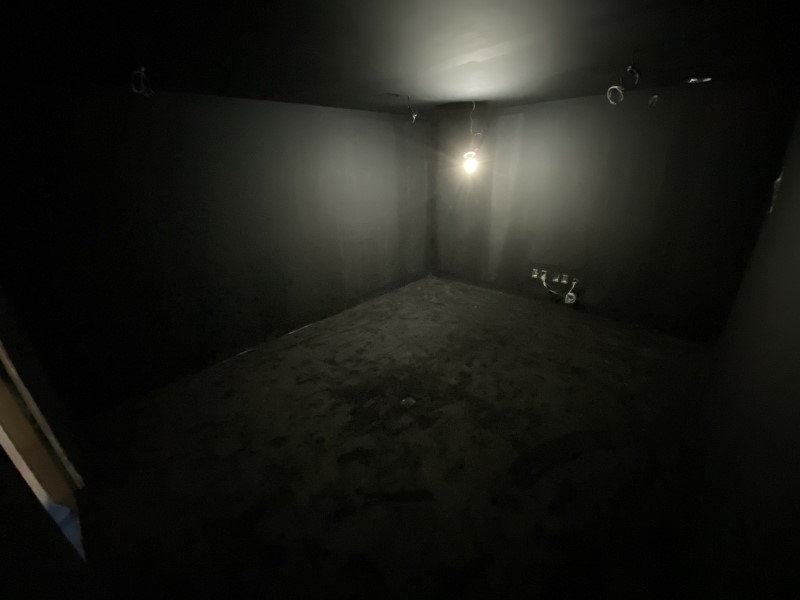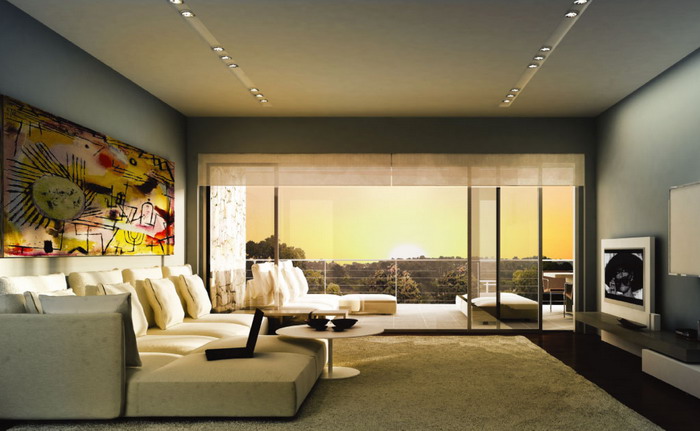How Much Light is Too Much? Do I Need an ALR Screen?
Ambient Light Rejecting (ALR) screens have become much more popular recently. Mostly due to UST projectors. You are thinking about getting one. But you have a question: How much light is really needed to justify an ALR screen? Let’s discuss!
Why ALR?
First, we must remind readers why someone might want an ALR screen. Projection screens are designed to reflect light from the projector back toward the viewers. They work best in completely dark rooms (like movie theaters).
If there is any other light source in the room, that light will also reflect off the screen. This can wash out the image and make the dark scenes look grey. You didn’t spend all that money on a great projector just to have some extraneous light source ruin your image! ALR screen here you come!

Total Light Control
If you have total light control, you obviously don’t need an Ambient Light Rejecting screen. Some people define “total light control” as “room with no windows.” That’s not really the case. If you primarily use your projection screen at night and you have curtains on your windows, you have total light control.

I have two windows in my home theater. I have blackout curtains over them. In the middle of the day, do they let in some light? Yes. But I really only watch at night. The only people that use the room during the day are my kids and they don’t care about the image nearly as much as I do. One Piece looks fine to them. I consider my theater to have total light control because I can completely black it out when it matters. An ALR screen is unneeded in my theater.
Partial Light Control
An ALR screen starts to make more sense when you can’t control the amount of light in your room when you care about the image quality. If you watch often during the day and you can’t block the light, you might want to look at an ALR screen. The real question isn’t the amount of light, but the direction.

Ambient Light Rejecting screens do reject some light. But in order for you to see the image, they must reflect some light back to you. The way they do this is by reflecting the light that is coming from the direction of the projector but rejecting light from other directions. This works great if the light from the projector and the ambient source of light are in different parts of the room. Not so much if they are near each other.
For example, if you are in a room with a projector at the back of the room and windows on the right wall, an ALR screen can work pretty well. It will reflect the light from the projector while rejecting the light coming in from the left windows. If, on the other hand, the projector is at the back of the room and light is coming from windows on the back wall, the ALR screen won’t work as well (if at all).
No Light Control
Let’s say that you have a projector and screen on the floor of a showroom. There are lights everywhere and they are always on. But you want people to be able to see your ads or presentation. Can an ALR screen help?
Absolutely!
You’d need to be very particular about the ALR screen you buy and match it up with the location of the projector (usually a UST projector mounted on the ceiling). You’ll also want a really bright projector that can still throw a vibrant image even in a lighted room. Will your colors be accurate? No. Will you have great black levels? Super no! But you’ll have an image that people can see.
If you are in a home and you are thinking of setting up a projection in a room with no light control, we’d advise against it. A direct-view TV would be a much better option. A projection setup that will look okay during the day in such a room will have many problems at night. A direct-view TV can have its light output increased during the day (backlight level) for clear viewing and lowered at night for better performance. That would be our recommendation.


